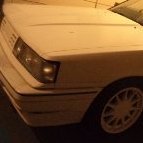New Engine Blown Up At Tuners
Announcements
-
Similar Content
-
Latest Posts
-
Out with the lenso d1 18x10 +20 with 25mm spacers in with the ame 18x11plus 10 no spacers each rim and tyre was 8 kgs lighter lighter which should be noticeable Apprentice helped out
-
By Dose Pipe Sutututu · Posted
Wow... What in the fk, it's a dead head system... -
By Julsmadrid · Posted
Yeah I initially reached out to them and they have been super helpful but they don’t have these rings in stock and they are the ones who told me they need to be made to suit.
-






Recommended Posts
Create an account or sign in to comment
You need to be a member in order to leave a comment
Create an account
Sign up for a new account in our community. It's easy!
Register a new accountSign in
Already have an account? Sign in here.
Sign In Now